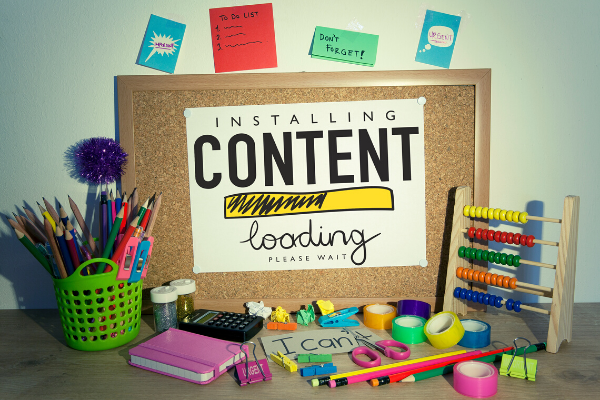Insights
INSIGHTS
All Topics
My Account
How to produce video content remotely
05 May 2020by Christine Chiu
Lockdown doesn’t have to mean that your video output dries up. We examine some creative workarounds to create content from home
Digital fundraising and content creation haven’t stalled because of lockdown restrictions. In fact, charity digital leaders and digital agencies have come up with innovative ways to produce video content remotely. Video content can be produced by external or internal professionals, and low-cost software can help charity producers create online tutorials, fundraising, and virtual content.
Why use video content?
Charity video content can be a powerful way for charities to get their message across – both in terms of impact and fundraising. Ahead of producing content, remember that online video content should aim to encourage face-to-face appeal and, in many cases, stir emotions. Lauded for emotional appeal and transparency, Charity: water’s approach to ‘immerse storytelling’ has motivated millions in funding.
Video content can also be live-streamed and exciting. Helping to drive fundraising efforts, video games can be streamed online to generate funds. Comic Relief recently staged the Dungeons & Dragons online gaming competition, with comedians logging on, and playing remotely. The event will then be live-streamed on Tiltify for viewers to watch for £1 minimum donation. The digital video fundraising efforts will help support charities struggling to cope with COVID-19.
Top tips for producing video content remotely
Going behind the scenes, producing video content remotely doesn’t need to come with a big production budget or in-real-life meetings. Our top tips include:
1.) Producing video content with archived footage
For charity digital leaders going through older footage, these older shots could be used for new content. Allowing for marketing and communications teams to work remotely, archived footage could be updated and repurposed for fundraising adverts, impact stories, and case studies. Ad agency WPNC has already proposed the idea to charity digital leaders and has worked with big brands like Plan International.
2.) Vlogging and diaries can help charity digital leaders share experiences
Charity Digital’s CEO Jonathan Chevallier has started a lockdown-proof way to produce video content. Vlogging his experiences working from home and ‘Top 3’ tips and tricks, Jonathan has successfully produced DIY video diaries from the safety of his home. Each week he shares developments in the charity digital world and practical ways of digital fundraising, information on software deals, and highlights new content on Charity Digital’s webinar series.
3.) Showcasing video content produced by supporters
Highlighting authenticity and impact, Young Epilepsy’s launch of The Channel featuring stories of those staying at home shows how charities can still produce video will under lockdown.
Young people chronicle their experience, and how they have been coping indoors with limited social interaction. The videos bring to light the charity’s cause. “Whilst seizures are the most widely recognised symptom of epilepsy, young people can face wide-ranging challenges with associated issues such as mental health, learning and sleep, as well as social inclusion and support throughout education,” said Mark Devlin, Young Epilepsy’s Chief Executive of the initiative.
4.) Video production software and resources are available
Finally, for those charity digital leaders who need a bit of creativity or expertise, there are resources to turn to:
Production agencies – A for hire agency, The Like-Minded specialises in charity video animations. The video stories can also be re-used for social media content, helping to increase reach. The agency has worked with children’s’ charity Barnardo’s on Billy’s Story.
Do-it-yourself videos – Popular with charity digital leaders trialling new content, low-cost video software can help leaders toe into the water. Zoom, the video conferencing service, allows footage to be recorded remotely. There is also added functionality to set recordings to 720p or HD, so marketing and communications teams can download the video for editing at a later date. The National Autistic Society has also used a videoconferencing format for its latest film launched on YouTube as part of World Autism Awareness Week, showing the popularity of remote video content production.
Other DIY resources include creating template videos remotely. Biteable, the online video content creator allows charity digital leaders to follow a pre-set template to produce video content. The templates are organised by theme, so producers can select a concept and then customise. Customisation is user-friendly – producers can add text, photos, or additional video content to pre-set infographics, text boxes, and video look throughs.
Stock content – For those charity digital leaders struggling with original content, online stockist can provide images and videos for use, or, further customisation. Film Supply offers stock videos available for download and licensing between $79-159 per clip. Shutterstock, known for its photo licensing business also includes video and music content. Clips can be purchased starting at £7 per clip.
More on this topic
Recommended Products
07 Mar 2025by Ioan Marc Jones
A-Z incredible fundraising ideas for charity
07 Mar 2025by Ioan Marc Jones
An A-Z glossary of service delivery terms and definitions
07 Mar 2025by Laura Stanley
Marketing trends for charities in 2025
Our Events
Charity Digital Academy
Our courses aim, in just three hours, to enhance soft skills and hard skills, boost your knowledge of finance and artificial intelligence, and supercharge your digital capabilities. Check out some of the incredible options by clicking here.



















